Illinois government worker unions spend millions on political activities and lobbying
Government workers’ union dues are passed on to state and national affiliates, which spend millions of dollars on political activities and lobbying every year.
The U.S. Supreme Court on June 27 decided one of the most important labor cases in decades, Janus v. AFSCME. At the crux of the case was the political nature of government worker unions.
While debate swirls about the proper role of government worker unions, the numbers don’t lie. These unions spend millions of dollars annually on highly partisan political activities and lobbying.
In fact, political spending often eclipses the amount the unions spend on representing members.
That may come as a surprise to many of Illinois’ 370,000 government workers. While nonmembers’ fees are not to be used for political purposes, that’s not the case with members’ dues. Unions can use dues in any way they see fit.
It doesn’t matter if a member’s local union affiliate doesn’t engage in or fund politics. A portion of members’ dues is passed on to state and national unions, which spend millions on political committees and organizations.
That means member dues support those political activities.
Below are summaries of the political spending of AFSCME Council 31, Illinois Education Association, or IEA, and Illinois Federation of Teachers, or IFT, and their national affiliates. The facts may leave some members questioning the financial priorities of their unions.
AFSCME Council 31 and AFSCME national headquarters
1) Between 2013 and 2017, AFSCME Council 31 and its national headquarters spent over $213 million on political activities and lobbying.
AFSCME Council 31 and its national headquarters reported spending over $213 million on political activities in the last five years. That’s according to the unions’ 2013-2017 LM-2s, which are federal reporting documents filed annually with the U.S. Department of Labor. In those documents, unions must account for spending on political activities and lobbying, along with other expenses.
That spending spiked in even-numbered years – i.e., election years – demonstrating the unions’ deep-seated commitment to political activity.
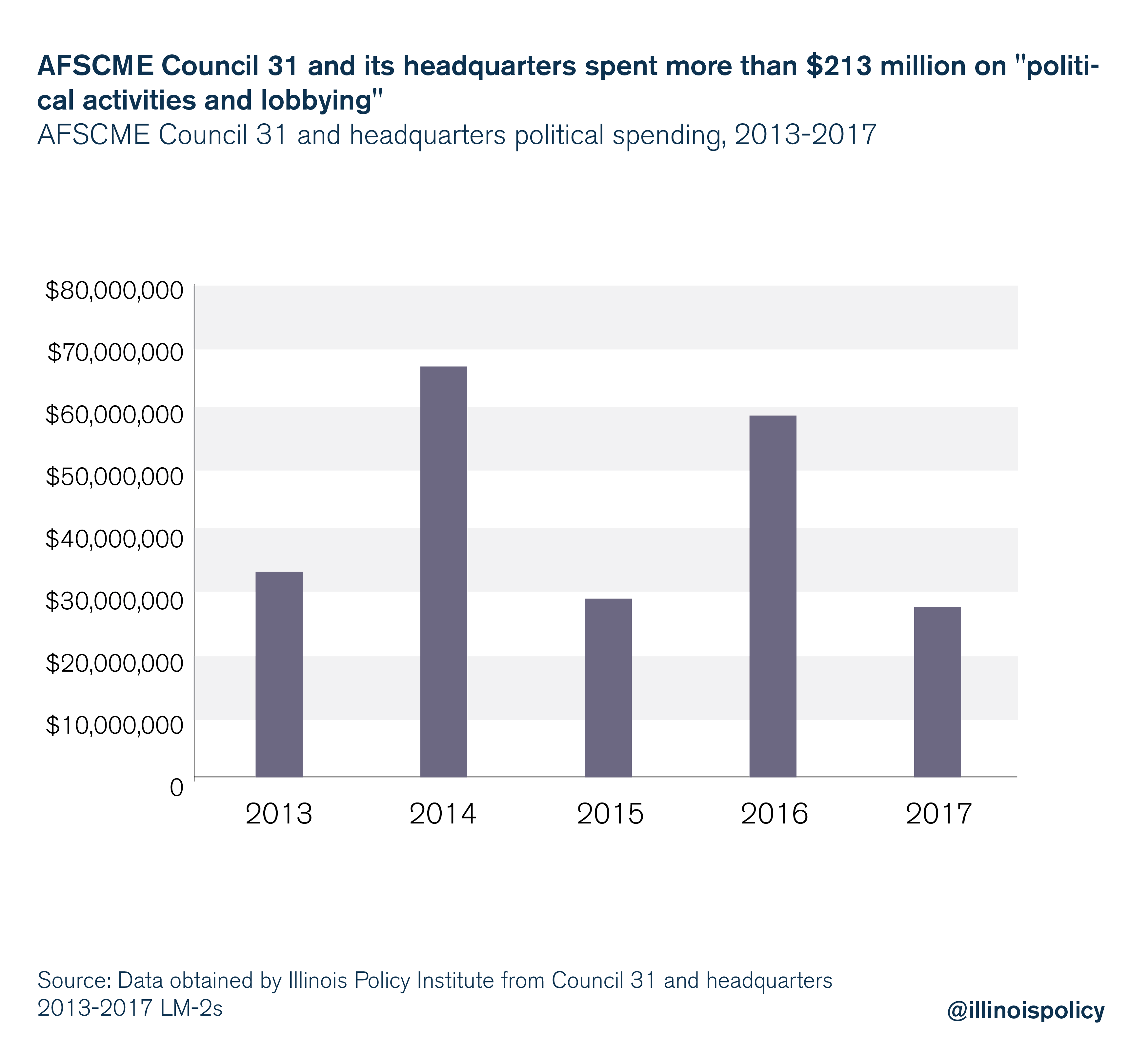
2) AFSCME headquarters routinely spends more on politics than it does on representing workers.
The LM-2s of AFSCME headquarters reveal that it spent, on average, over $50 million a year on political activities and lobbying in the last 10 years – but under $42 million a year on representational activities.
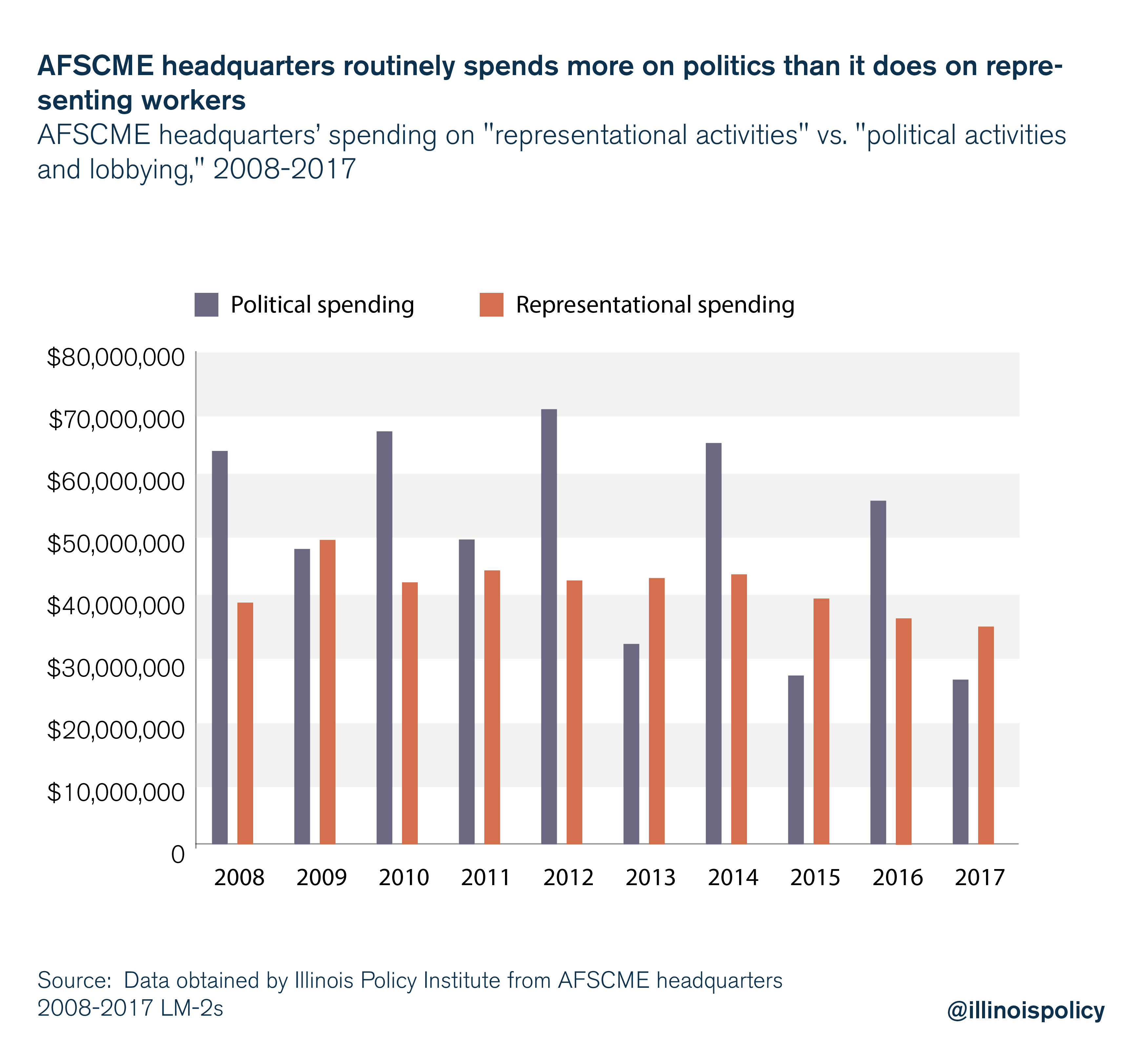
Government unions such as AFSCME claim to serve the workers they represent. But that claim is called into question when politics take priority over representing workers.
3) AFSCME Council 31’s political action committee spends millions on Illinois Democrats.
Between 2013 and 2017, Council 31’s PAC directed over $6.8 million to election committees and other political action committees in Illinois, according to records with the Illinois State Board of Elections.
Of that amount, 74 percent (at least $5 million) was directed toward Democratic committees or organizations, with just 6 percent (a little over $400,000) toward Republican committees or organizations. The remainder went to committees or organizations not necessarily affiliated with either major political party.
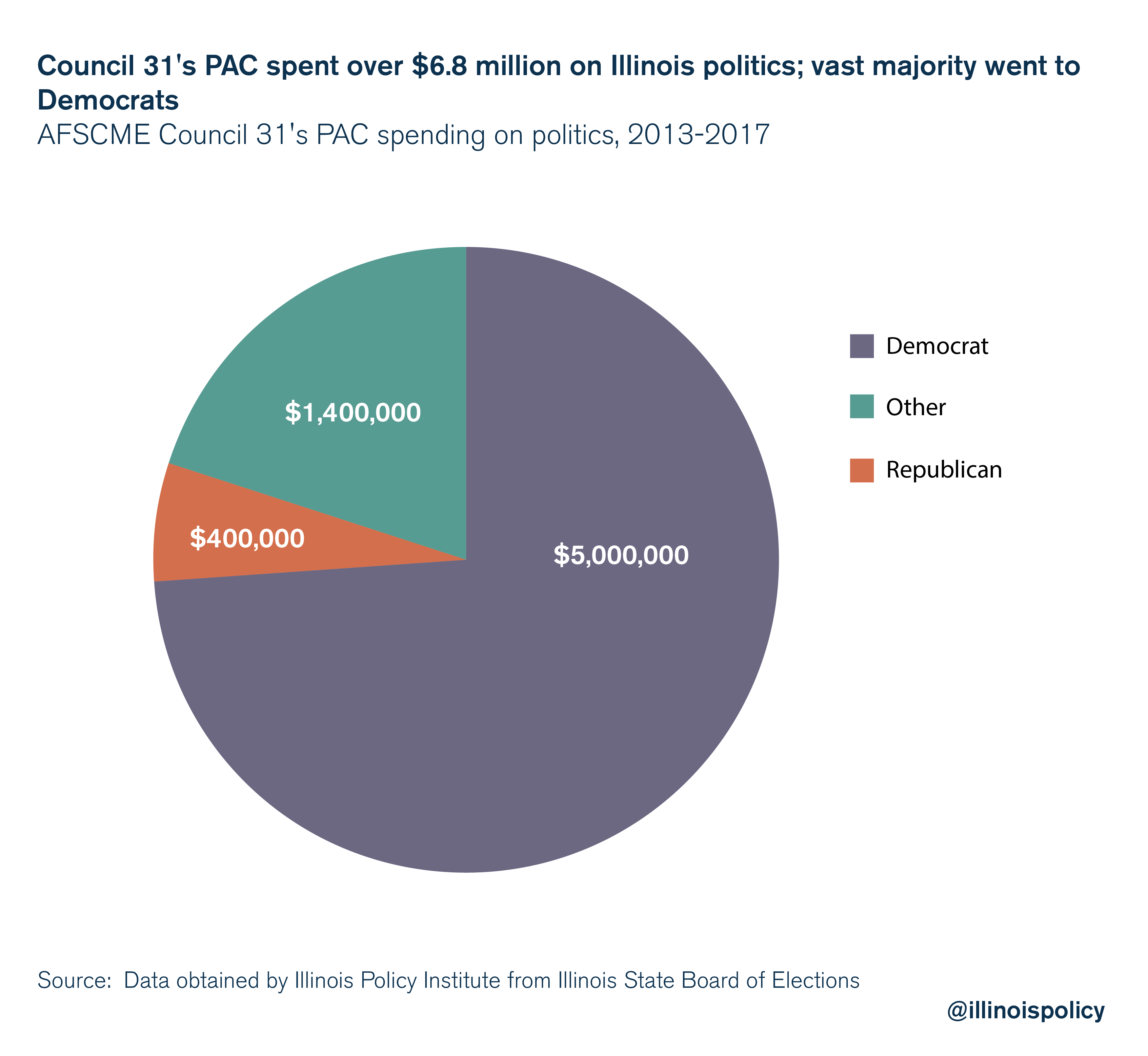
Illinois Education Association and National Education Association
1) Between 2013 and 2017, IEA and its national headquarters, NEA, spent over $219 million on political activities and lobbying.
IEA and NEA reported spending over $219 million on political activities and lobbying in their 2013-2017 LM-2s – spending even more than AFSCME Council 31 and its headquarters.
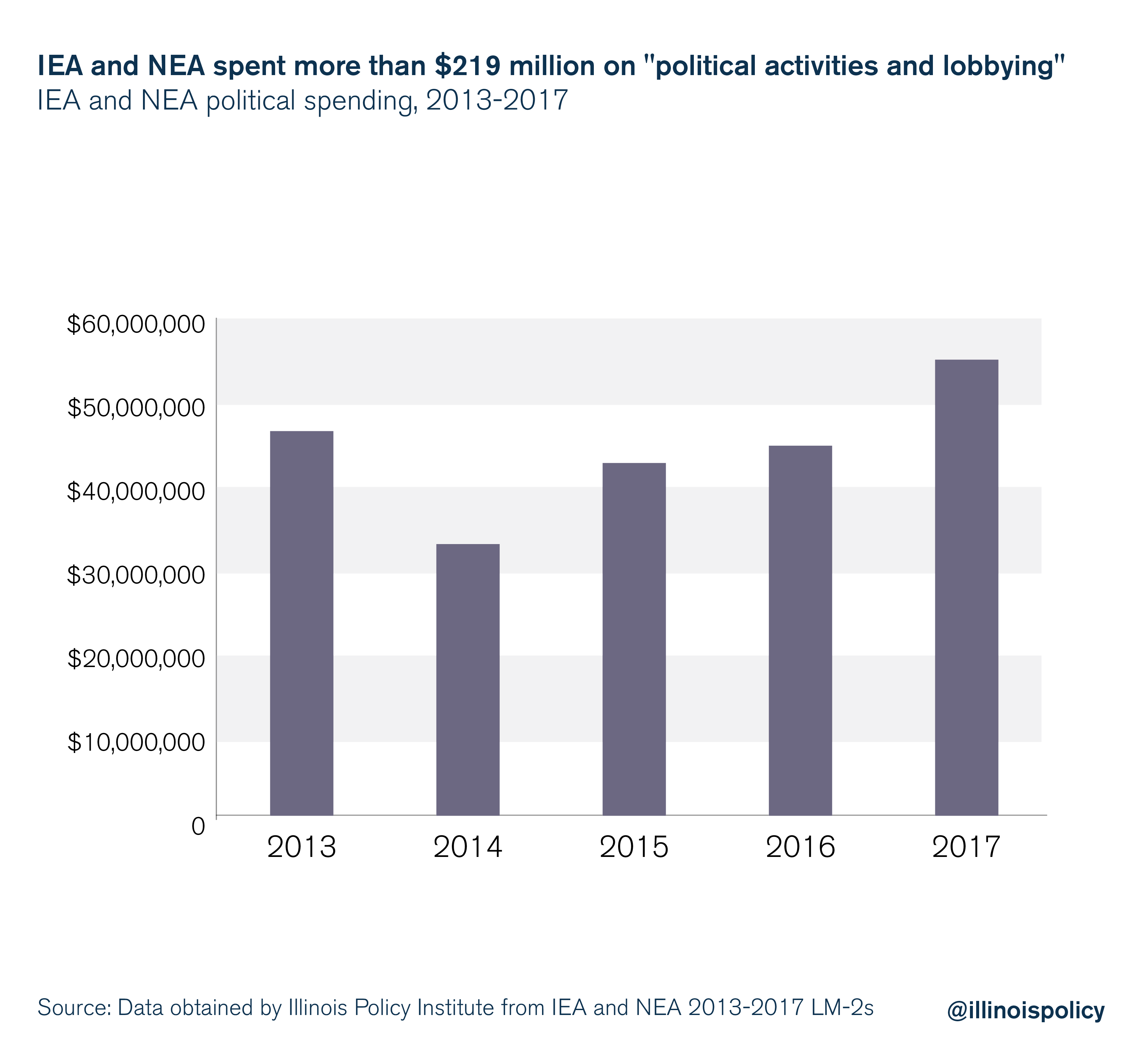
2) NEA has spent more on politics than on representing workers.
Like AFSCME’s headquarters, NEA has been known to spend more on politics than it does on representing workers. Its LM-2s reveal that twice in the last five years (2013 and 2017), NEA has spent more on political activities and lobbying than it has on representational activities.
3) IEA’s political action committee spends millions on Illinois politics.
Between 2013 and 2017, IEA’s PAC directed over $11.3 million to election committees and other political action committees in Illinois, according to records with the Illinois State Board of Elections.
It directed over $3.8 million to Democrats and over $2.5 million to Republicans during that time period.
Illinois Federation of Teachers and American Federation of Teachers
1) Between 2013 and 2017, IFT and its national headquarters, AFT, spent over $164 million on political activities and lobbying.
IFT and AFT admitted spending over $164 million on political activities and lobbying in their 2013-2017 LM-2s.
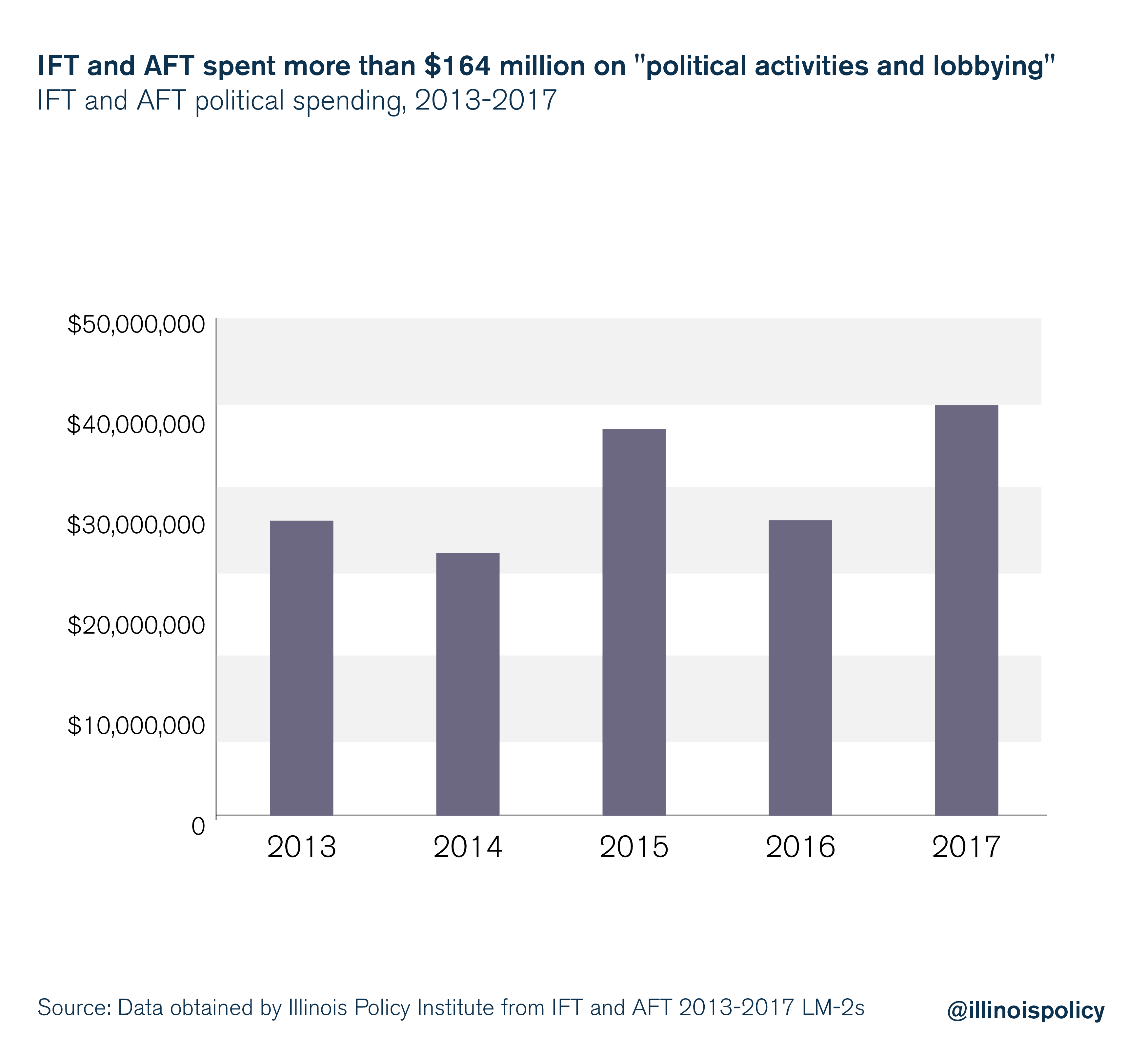
2) AFT directs millions of dollars to its political account, which mainly supports Democrats.
AFT directs millions of dollars to its political account, according to its LM-2s.
In the 2016 election cycle alone, AFT PAC’s contributions to federal candidates topped $1.7 million to Democrats, including Hillary Clinton; Rep. Nancy Pelosi, D-Calif; Sen. Tammy Duckworth, D-Ill.; and Sen. Chuck Schumer, D-N.Y. It spent just $5,500 on federal Republican candidates.
3) IFT sends millions to its Chicago affiliates, but a relative pittance to downstate affiliates.
According to its 2016 LM-2, IFT directed over $2.5 million to the Chicago Teachers Union and over $962,000 to other affiliates in Chicago and the Chicago suburbs for representational activities in 2016.
Yet the union directed less than $81,000 combined to its affiliates located south of I-80.
That’s a major discrepancy in representational funding between Chicago and downstate affiliates.
These numbers reveal heavy, intensely partisan political spending by government worker unions and their state and national affiliates, which might not reflect the preferences of the union members who fund this with their dues.
